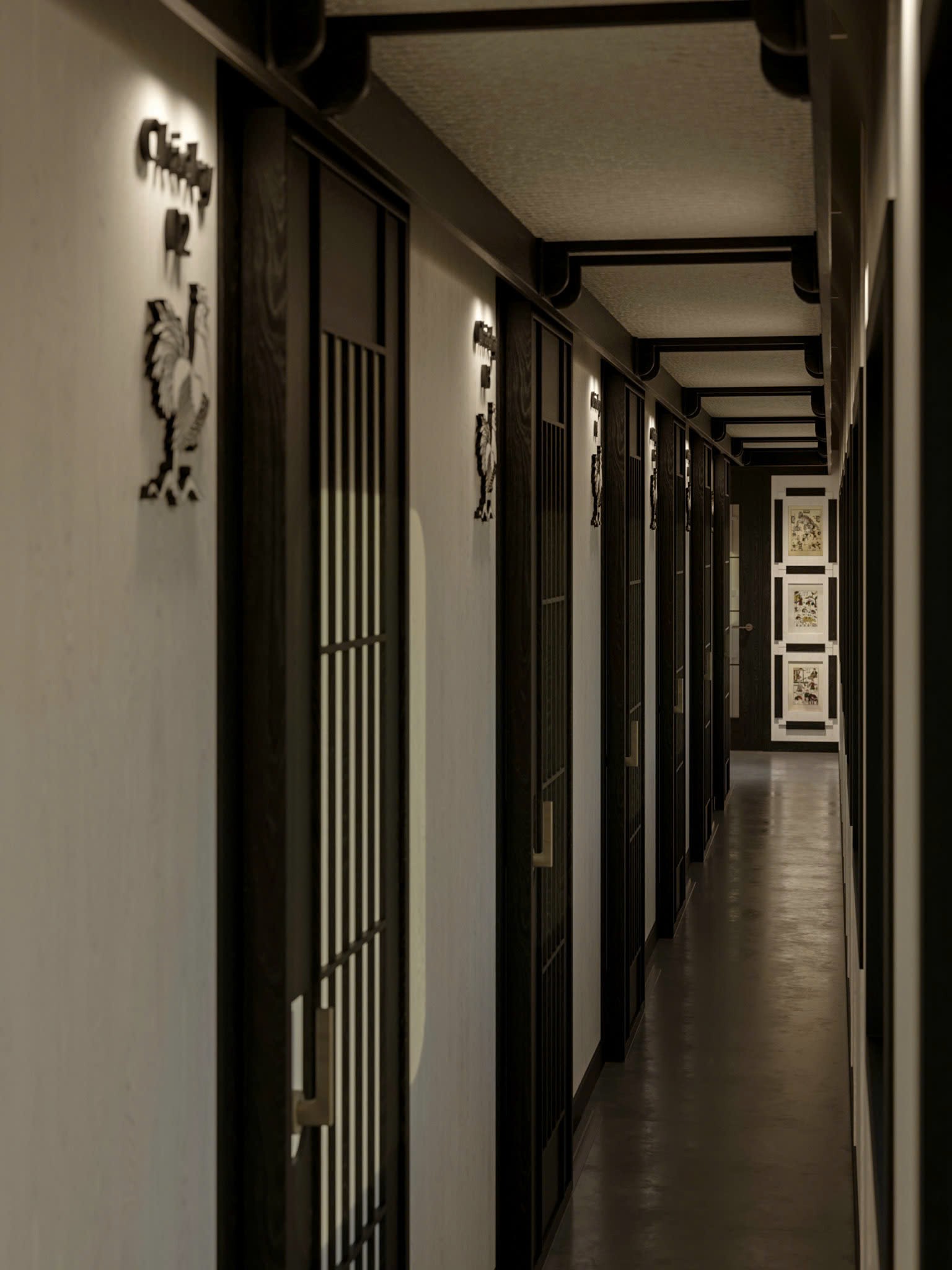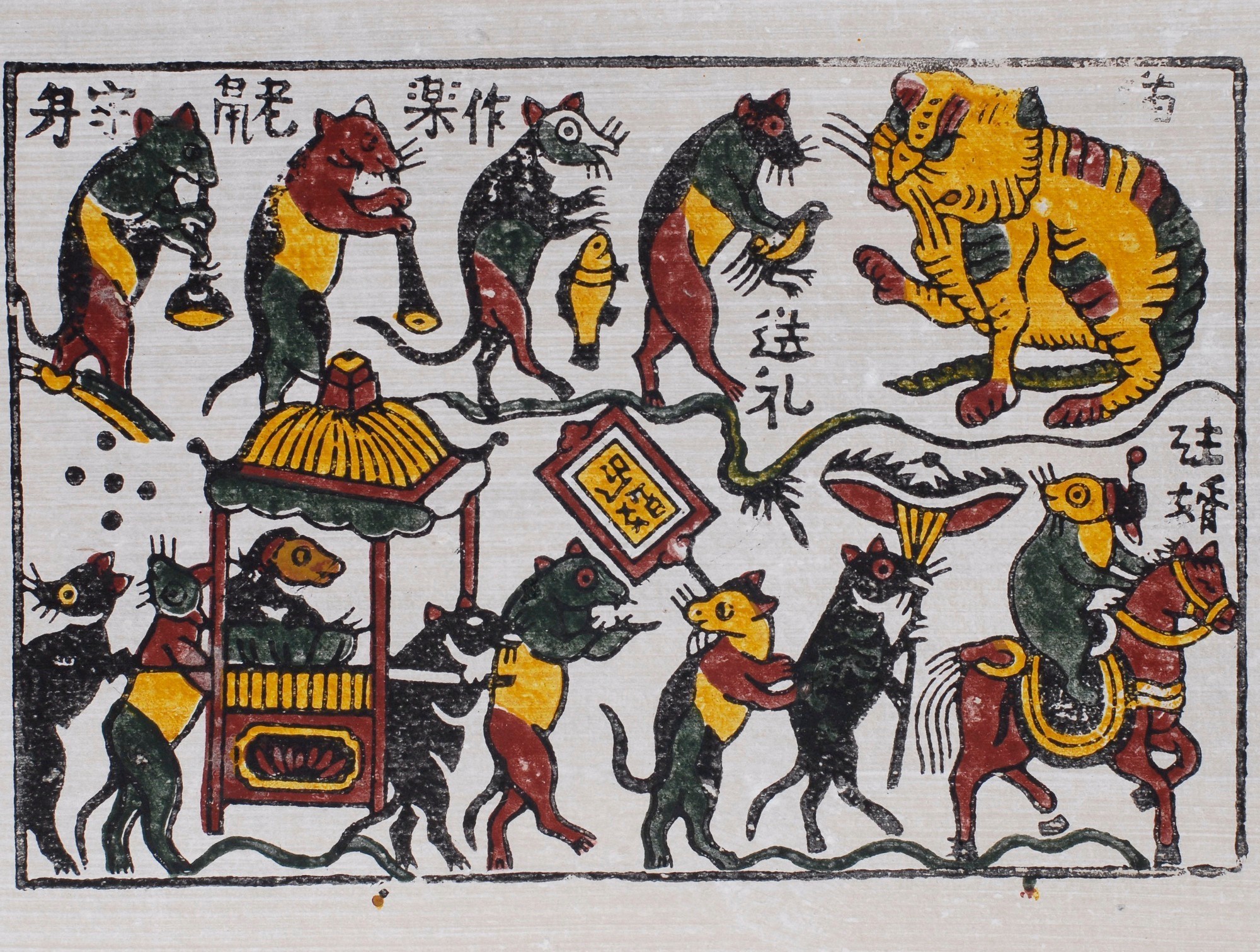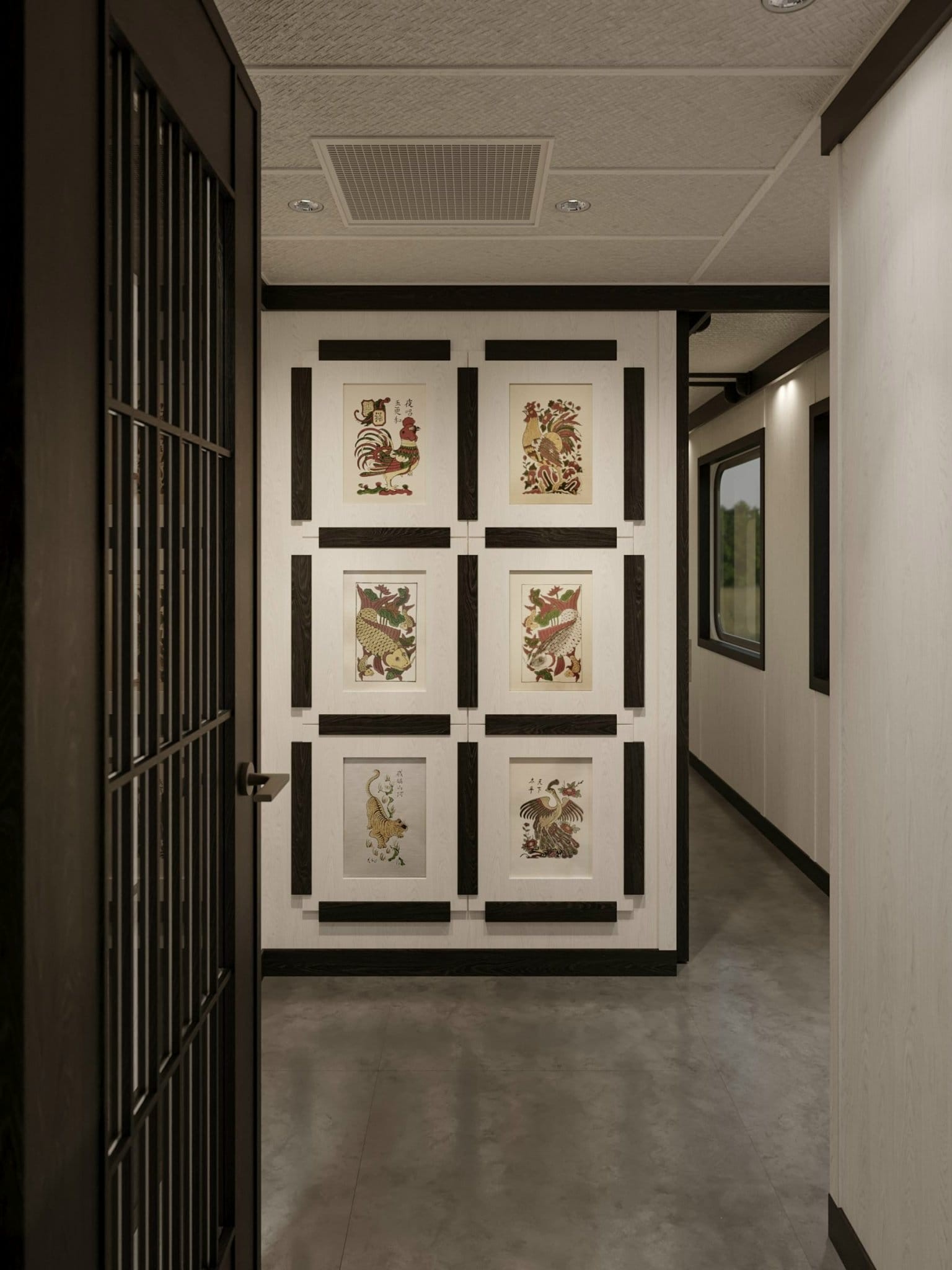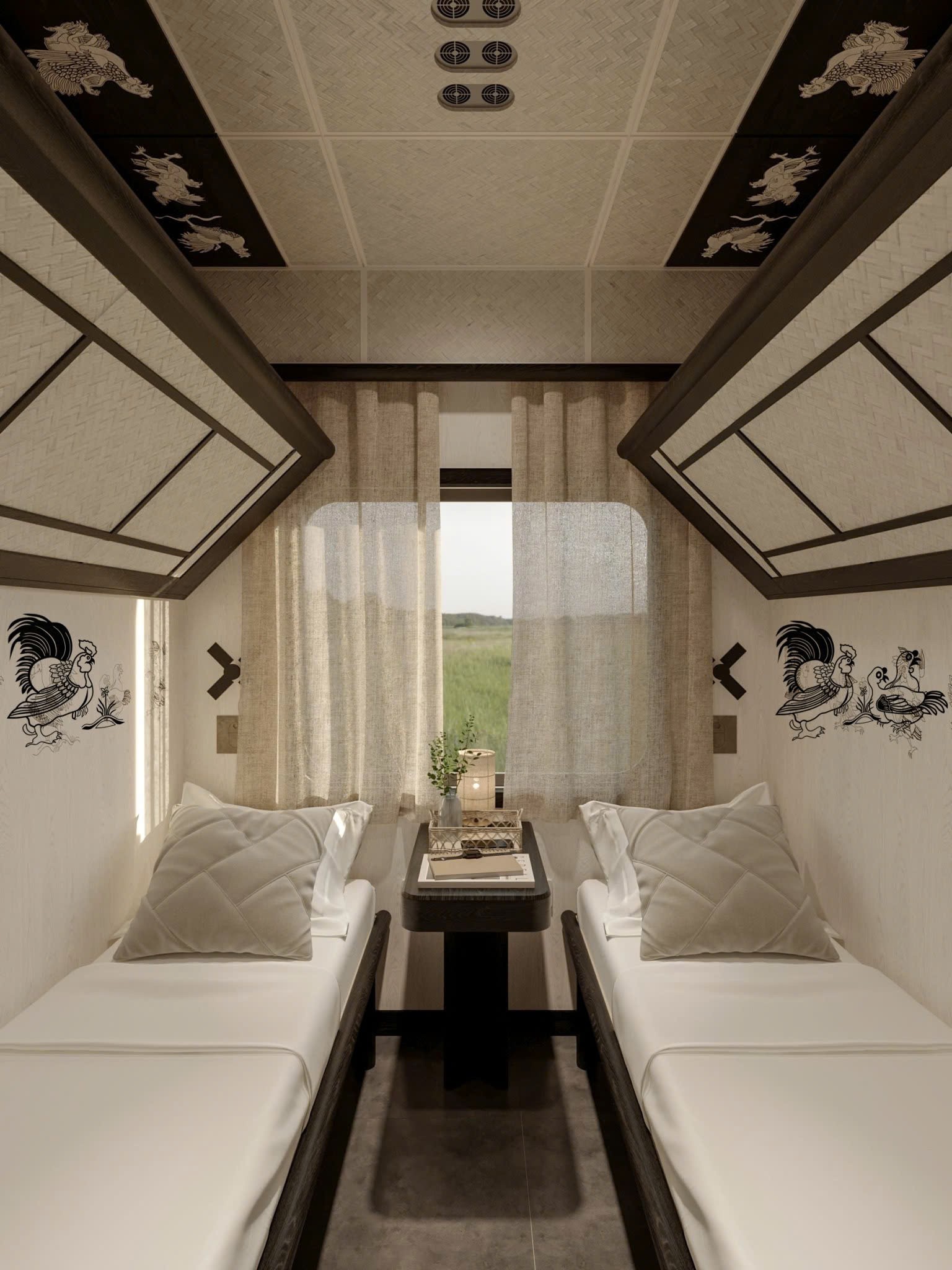Are you captivated by Vietnamese culture and seeking a unique art form? What makes Dong Ho paintings unique? Dong Ho paintings stand out because of their natural materials, traditional themes, and distinctive woodblock printing technique. SIXT.VN offers curated travel experiences that allow you to immerse yourself in the richness of Vietnamese heritage. Discover the allure of these folk masterpieces and unlock a deeper understanding of Vietnam’s cultural tapestry with SIXT.VN.
1. What is the History of Dong Ho Paintings?
Dong Ho paintings boast a rich history, deeply rooted in Vietnamese folk art and cultural traditions. These paintings originated in Dong Ho village, Song Ho commune, Thuan Thanh district, Bac Ninh province, Vietnam. Dong Ho paintings reflect the daily life, social values, and religious beliefs of the Vietnamese people, offering a glimpse into the soul of the nation. According to research from the Vietnam National Institute of Culture and Arts Studies, in 2012, Dong Ho paintings are a window into understanding the cultural values and traditions of the Vietnamese people, showcasing their artistic talent and creativity.
1.1 When Did Dong Ho Paintings Flourish?
The most prosperous period for Dong Ho paintings was during the 17th and 18th centuries. At this time, they were also known as Tet paintings, produced and sold during the Lunar New Year for display in rural markets.
1.2 What is Their Cultural Significance?
On each simple bamboo wall of a thatched cottage, the vibrant colors of the paintings echoed the sounds of fireworks, bringing joy and dreams at the beginning of the year. In 2013, the craft of making Dong Ho folk paintings was recognized as a National Intangible Cultural Heritage of Vietnam.
 Dong Ho folk painting featuring a buffalo and a boy, exemplifying traditional Vietnamese culture and the bond between humans and animals
Dong Ho folk painting featuring a buffalo and a boy, exemplifying traditional Vietnamese culture and the bond between humans and animals
2. What Artistry is Involved in Dong Ho Paintings?
The artistry in Dong Ho paintings lies in their ability to represent legends, philosophical allegories, and moral messages through sophisticated engravings. According to a study by the Vietnam Fine Arts Association in 2015, the creation of Dong Ho paintings requires not only technical skill but also a deep understanding of Vietnamese culture and symbolism, making each artwork a cultural artifact.
2.1 What Skills are Required?
Creating sophisticated engravings requires skilled model painters and board engravers with a love of art and an artist’s soul, possessing a high level of technical expertise.
2.2 What are the Artistic Principles?
Dong Ho folk painting does not strictly adhere to anatomy, principles of light, or laws of proximity found in modern painting. Artists employ convention in composition and color depiction, using a single-line drawing style to express themselves, resulting in simple yet reasonable features.
3. What are the Common Themes in Dong Ho Paintings?
Dong Ho woodcuts cover a wide range of themes that resonate with the Vietnamese people’s values and aspirations. These themes reflect the country’s history, culture, and daily life, as noted by the Vietnamese Institute for Art and Cultural Studies in their 2018 report on folk art.
3.1 What are the Types of Themes?
- Congratulations: Expressing the eternal dreams of workers for full meals, warm clothes, prosperous homes, thriving businesses, and many children.
- History: Praising national heroes and reflecting glorious feats in the process of defending and building the country.
- Worship Paintings: Painted according to etiquette, customs, medical disciplines, and parallel sentences.
- Story Paintings: Promoting humanism, praising justice, and educating morality.
- Proverb Paintings: Vividly illustrating good examples of the ancients, containing profound philosophies.
- Landscape Paintings: Expressing love for the homeland with lush flowers and grass.
- Daily Life Paintings: Reflecting farm work, fun games, eliminating bad customs, and satirizing aspects of life.
 "The Rat's Wedding" Dong Ho painting, depicting a satirical scene of a rat wedding procession, reflecting social commentary
"The Rat's Wedding" Dong Ho painting, depicting a satirical scene of a rat wedding procession, reflecting social commentary
4. What is the Dong Ho Painting Handicrafting Process?
The Dong Ho painting handicrafting process involves several intricate steps, each requiring specialized skills and natural materials. According to the Bac Ninh Department of Culture, Sports and Tourism in 2020, the meticulous process of creating Dong Ho paintings is a testament to the dedication and craftsmanship of the artisans.
4.1 How are the Woodblocks Made?
Each Dong Ho painting requires 2-5 different woodblocks, depending on the colors of each model, making this the most challenging step. To create color blocks, craftsmen select soft, light wood that absorbs color well, such as dổi wood (ford-manglietia fordiana) and vàng tâm wood (Magnolia conifera). For outline blocks, durable, strong, and smooth wood like Manglietia conifera, Thị wood, or Apocynaceae is essential. The painting printing process uses woodblocks, with each person responsible for a specific color.
4.2 What is the Significance of Dó Paper?
The painting background uses dó paper (made from the bark of a tree called “dó”) covered with a layer of powdered shell. This paper, produced by hand in Dong Cao village (Bac Ninh) or Buoi village (Hanoi), comes in various sizes. To create a sheet of dó paper, people select dó shells, dry, soak, and pound them, mix the powder into the paper machine, squeeze out the water, dry, and cut the finished product. Dó paper is thin, fibrous, and absorbs color well without smudging.
4.3 What are the Natural Paint Colors Used?
The colors in Dong Ho paintings are entirely natural, with five main colors:
- Black: Made from burnt bamboo leaves.
- Green: Derived from the bark and leaves of indigo trees.
- Yellow: Made from sophora flowers.
- Bright Red: Extracted from the trunk and roots of vang trees.
- White: Made from scallop shells.
Details are colored with different shades of light and dark, highlighting or pressing down to depict the lines in the painting, a characteristic that distinguishes this type of painting.
4.4 How is the Printing Process Conducted?
Completing a Dong Ho painting takes considerable time and involves professional craftsmen who make ink and paper from natural materials, create molds, and print the painting. Raw pigments are mixed with glutinous rice flour before printing to create a layer of glue, hardening the painting paper after drying. The printing process uses monochrome color blocks divided by rough, clear borders, with characters arranged evenly. Usually, 2-5 blocks are needed, each corresponding to one color, with dark colors printed first, followed by light colors, and finally black to complete the painting.
4.5 How are the Paintings Dried?
After printing, the paintings are dried to complete the process.
 Dong Ho paintings adorning the interior of a train cabin, illustrating how traditional art can be integrated into modern settings
Dong Ho paintings adorning the interior of a train cabin, illustrating how traditional art can be integrated into modern settings
5. Why are Natural Materials Essential to Dong Ho Paintings?
Natural materials are fundamental to Dong Ho paintings, contributing to their unique character and cultural significance. The use of natural materials aligns with Vietnam’s cultural values of sustainability and harmony with nature, as noted by cultural experts at the Hanoi National University in 2017.
5.1 What Role Do They Play?
The natural materials used in Dong Ho paintings give them a distinct look and feel, setting them apart from other forms of art. These materials are locally sourced, reflecting the close relationship between the art form and the environment.
5.2 How Do They Affect the Art?
The natural colors, derived from plants and minerals, create a soft, earthy palette that evokes a sense of tranquility and nostalgia. The dó paper, made from tree bark, provides a unique texture that enhances the tactile experience of the paintings.
6. How Do Traditional Themes Influence Dong Ho Paintings?
Traditional themes in Dong Ho paintings serve as a visual narrative of Vietnamese culture, history, and folklore. These themes provide insight into the values, beliefs, and customs of the Vietnamese people, making the paintings culturally significant. According to research from the Museum of Ethnology in Hanoi, in 2019, the traditional themes in Dong Ho paintings act as a form of cultural preservation, passing down stories and lessons from one generation to the next.
6.1 What Stories Do They Tell?
These paintings often depict scenes from daily life, historical events, and moral stories that have been passed down through generations. The themes reflect the values of community, family, and respect for ancestors, reinforcing social cohesion and cultural identity.
6.2 Why are They Important?
The traditional themes in Dong Ho paintings help to preserve and promote Vietnamese culture, both within the country and internationally. These paintings serve as cultural ambassadors, sharing the beauty and wisdom of Vietnamese heritage with the world.
7. How Does Woodblock Printing Define Dong Ho Paintings?
Woodblock printing is the defining technique of Dong Ho paintings, giving them their characteristic lines, textures, and colors. This traditional printing method is a labor-intensive process that requires skilled artisans and specialized tools. The Vietnam National Museum of Fine Arts highlights that the woodblock printing technique is not only a method of reproduction but also an integral part of the artistic expression in Dong Ho paintings.
7.1 What is Involved?
The woodblock printing process involves carving images onto wooden blocks, applying ink to the blocks, and pressing them onto paper to create prints. Each color in the painting requires a separate woodblock, adding to the complexity and artistry of the process.
7.2 How Does it Affect the Final Product?
The woodblock printing technique gives Dong Ho paintings their unique visual style, characterized by bold lines, flat colors, and intricate details. The texture of the woodblocks adds depth and dimension to the paintings, enhancing their aesthetic appeal.
8. How Can You Experience Dong Ho Paintings in Vietnam?
Experiencing Dong Ho paintings in Vietnam offers a unique opportunity to connect with the country’s cultural heritage and artistic traditions. According to the Vietnam Tourism Advisory Board in 2021, cultural tourism experiences like visiting Dong Ho painting workshops contribute significantly to preserving and promoting Vietnamese art and culture.
8.1 What are Some Ways to See Them?
- Visit Dong Ho Village: Take a trip to Dong Ho village in Bac Ninh province, the birthplace of Dong Ho paintings, and witness the art form being practiced by local artisans.
- Explore Art Galleries and Museums: Visit art galleries and museums in Hanoi and other cities to view collections of Dong Ho paintings and learn about their history and significance.
- Attend Cultural Festivals: Participate in cultural festivals and events that showcase Dong Ho paintings, allowing you to immerse yourself in the art form and interact with artists.
- Purchase Dong Ho Paintings: Buy Dong Ho paintings as souvenirs or collectibles, supporting local artisans and taking home a piece of Vietnamese culture.
8.2 How Can SIXT.VN Enhance Your Experience?
SIXT.VN offers a range of services to enhance your experience with Dong Ho paintings and Vietnamese culture:
- Customized Tours: SIXT.VN can create customized tours that include visits to Dong Ho village, art galleries, and cultural festivals, allowing you to experience the art form firsthand.
- Transportation Services: SIXT.VN provides reliable and comfortable transportation services to and from cultural sites, ensuring a hassle-free travel experience.
- Accommodation Options: SIXT.VN offers a variety of accommodation options, from boutique hotels to luxury resorts, catering to different budgets and preferences.
- Local Guides: SIXT.VN can arrange for knowledgeable local guides to accompany you on your cultural excursions, providing insights into the history, symbolism, and artistic techniques of Dong Ho paintings.
SIXT.VN makes it easy to explore the beauty and cultural significance of Dong Ho paintings, providing you with an unforgettable travel experience in Vietnam.
 Dong Ho paintings displayed in a traditional setting, showcasing the vibrant colors and traditional themes
Dong Ho paintings displayed in a traditional setting, showcasing the vibrant colors and traditional themes
9. What are the Benefits of Appreciating Dong Ho Paintings?
Appreciating Dong Ho paintings provides numerous benefits, both personally and culturally. Dong Ho paintings offer insights into Vietnamese history, culture, and values, enriching one’s understanding of the world. According to a study by UNESCO in 2016, preserving and promoting traditional art forms like Dong Ho paintings contributes to cultural diversity and sustainable development.
9.1 What Personal Growth Can Be Achieved?
By appreciating Dong Ho paintings, you can develop a deeper understanding of Vietnamese culture, history, and values. You can also enhance your aesthetic sensibilities and creative thinking skills.
9.2 What Cultural Contributions Can Be Made?
By supporting Dong Ho painting artisans and promoting their work, you can contribute to the preservation and promotion of Vietnamese cultural heritage. You can also help to raise awareness of the art form and its significance, both within Vietnam and internationally.
10. How Does SIXT.VN Support Cultural Tourism in Vietnam?
SIXT.VN plays a crucial role in supporting cultural tourism in Vietnam by providing services that facilitate access to cultural sites and experiences. By partnering with local artisans and cultural organizations, SIXT.VN helps to promote and preserve Vietnamese cultural heritage. The Vietnam National Administration of Tourism acknowledges the importance of tourism companies like SIXT.VN in promoting cultural tourism and supporting local communities.
10.1 What Services are Offered?
SIXT.VN offers a range of services that cater to the needs of cultural tourists:
- Customized Tours: SIXT.VN creates customized tours that include visits to cultural sites, museums, and art galleries, allowing tourists to immerse themselves in Vietnamese culture.
- Transportation Services: SIXT.VN provides reliable and comfortable transportation services to cultural destinations, ensuring a seamless travel experience.
- Accommodation Options: SIXT.VN offers a variety of accommodation options that reflect Vietnamese culture and hospitality, from traditional guesthouses to boutique hotels.
- Local Guides: SIXT.VN arranges for knowledgeable local guides to accompany tourists on their cultural excursions, providing insights into the history, art, and traditions of Vietnam.
10.2 How Does SIXT.VN Help?
SIXT.VN’s services help to make cultural tourism more accessible and enjoyable for visitors, while also supporting local communities and promoting Vietnamese cultural heritage. By choosing SIXT.VN, you can contribute to the sustainable development of cultural tourism in Vietnam.
Ready to explore the unique world of Dong Ho paintings and immerse yourself in Vietnamese culture? Let SIXT.VN be your trusted travel partner, providing you with seamless and enriching experiences. Visit our website at SIXT.VN or contact us via Hotline/Whatsapp at +84 986 244 358 to start planning your cultural adventure today! Our address is 260 Cau Giay, Hanoi, Vietnam.
FAQ: Dong Ho Paintings
1. What are Dong Ho paintings?
Dong Ho paintings are a traditional form of Vietnamese folk art, originating from Dong Ho village in Bac Ninh province. They are woodblock prints made using natural materials and depict scenes from daily life, historical events, and moral stories.
2. What makes Dong Ho paintings unique?
Dong Ho paintings are unique due to their natural materials, traditional themes, and distinctive woodblock printing technique. The use of natural colors and dó paper, combined with themes that reflect Vietnamese culture and values, sets them apart from other art forms.
3. Where can I see Dong Ho paintings?
You can see Dong Ho paintings in Dong Ho village, art galleries and museums in Hanoi, and during cultural festivals in Vietnam. SIXT.VN can arrange customized tours to these locations.
4. How are Dong Ho paintings made?
Dong Ho paintings are made using woodblock printing, where images are carved onto wooden blocks, ink is applied, and the blocks are pressed onto dó paper. Each color requires a separate woodblock.
5. What are the common themes in Dong Ho paintings?
Common themes include scenes from daily life, historical events, moral stories, and auspicious symbols. These themes reflect Vietnamese culture, values, and beliefs.
6. What materials are used in Dong Ho paintings?
Dong Ho paintings use natural materials, including dó paper (made from tree bark), natural colors (derived from plants and minerals), and woodblocks for printing.
7. Why are Dong Ho paintings considered cultural heritage?
Dong Ho paintings are considered cultural heritage because they reflect Vietnamese history, culture, and values. They are a unique art form that has been passed down through generations.
8. How can I support Dong Ho painting artisans?
You can support Dong Ho painting artisans by visiting Dong Ho village, purchasing their paintings, and promoting their work to others. SIXT.VN partners with local artisans to promote their art.
9. What is the significance of the colors in Dong Ho paintings?
The colors in Dong Ho paintings are derived from natural sources and each color has a symbolic meaning. For example, red symbolizes good fortune, while yellow represents prosperity.
10. Can SIXT.VN help me experience Dong Ho paintings in Vietnam?
Yes, SIXT.VN offers customized tours, transportation services, and local guides to help you experience Dong Ho paintings and other cultural attractions in Vietnam. Contact us to plan your cultural adventure!



